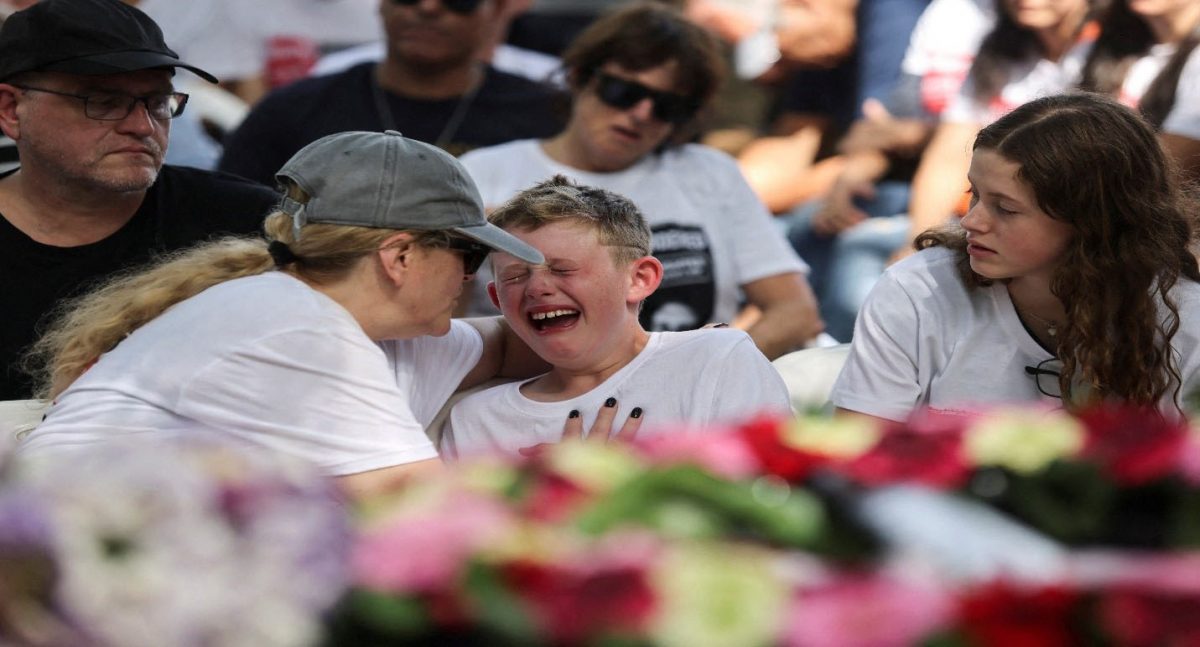GAZA/JERUSALEM (Reuters) – Fears that the Israel-Hamas war could mushroom into a wider Middle East conflict rose on Sunday with Washington warning of a significant risk to U.S. interests in the region as ally Israel pounded Gaza and clashes on its border with Lebanon intensified.
Gaza’s Health Ministry said 266 Palestinians, including 117 children, had been killed by Israeli air strikes in the past 24 hours in the enclave, to which Israel laid “total siege” after a deadly mass infiltration into Israel by Hamas gunmen on Oct. 7.
In neighbouring Syria, where Hamas’ main regional backer Iran has a military presence, Israeli missiles hit Damascus and Aleppo international airports early on Sunday, putting both out of service and killing two workers, Syrian state media said.
Along Israel’s northern border with Lebanon, the Iran-backed Hezbollah group has clashed with Israeli forces in support of Hamas in the deadliest escalation of frontier violence since an Israel-Hezbollah war in 2006.
With violence around its heavily guarded borders increasing, Israel on Sunday added 14 communities close to Lebanon and Syria to its evacuation contingency plan in the north of the country.
Hezbollah on Sunday announced the deaths of six more fighters, raising to 26 the number of its members killed since Oct. 7.
Palestinian Prime Minister Mohammad Shtayyeh called on the international community to create “a united front” to stop Israel’s attacks against Gaza and allow in desperately needed aid which has only begun to trickle in.
A second convoy of 14 aid trucks entered the Rafah crossing to the besieged Gaza Strip on Sunday night, and U.S. President Joe Biden and Israeli Prime Minister Benjamin Netanyahu affirmed in a call “there will now be continued flow of this critical assistance into Gaza,” the White House said.
Biden on Sunday also ramped up his diplomacy, convening separate calls with the leaders of Canada, France, Britain, Germany and Italy, after speaking with Netanyahu and Pope Francis.
French President Emmanuel Macron and Dutch Prime Minister Mark Rutte will visit Israel this week.
But U.S. Defense Secretary Lloyd Austin voiced concern about the risk of a regional crisis on Sunday after announcing deployments of more military assets to the Middle East in support of Israel and strengthen the U.S. defence posture in the region after “recent escalations by Iran and its proxy forces” – a reference to Hezbollah, Palestinian and other militants.
“We’re concerned about potential escalation. In fact, what we’re seeing … is the prospect of a significant escalation of attacks on our troops and our people throughout the region,” Austin told ABC’s “This Week” program on Sunday.
“If any group or any country is looking to widen this conflict and take advantage of this very unfortunate situation … our advice is: don’t,” he added.
Washington has deployed a significant amount of naval power to the Middle East, including two aircraft carriers, support ships and about 2,000 Marines, to help deter attacks by Iran-affiliated forces.
Austin said a Terminal High Altitude Area Defense (THAAD) system and extra Patriot air defence missile system battalions will be sent to the region and more troops put on standby.
Iranian security officials told Reuters Iran’s strategy was for Middle East proxies like Hezbollah to pursue limited strikes on Israeli and U.S. targets but to avoid a major escalation that would draw in Tehran, a high-wire act for the Islamic Republic.
Israel unleashed an aerial blitz on Gaza to its southwest after Hamas militants breached the border on Oct. 7 and killed 1,400 people, mainly civilians, and took 212 hostages back to Gaza.
Gaza’s Health Ministry said on Sunday that Israel’s air and missile strikes in retaliation had killed at least 4,651 and wounded 14,245, with over a million of the densely populated enclave’s 2.3 million people displaced.
Israel has amassed tanks and troops near the fenced border around Gaza for a planned ground invasion aiming to annihilate Hamas, after several inconclusive wars dating to its seizure of power there in 2007, after Israel ended a 38-year occupation.
At least three Palestinians were killed on Sunday night and several others were wounded in an Israeli air strike in Jabalia refugee camp in northern Gaza strip, medics and witnesses told Reuters.
Gaza’s Health Ministry said most of the dead from air strikes over the past 24 hours were in Gaza’s south. Israel says it is only targeting militants and that they often use residential buildings as cover.
The first humanitarian aid convoy allowed into Gaza since war erupted arrived in southern Gaza from Egypt on Saturday after days of negotiations. The U.N. said the 20-truck convoy brought life-saving medical supplies and some food.
Soon after the second convoy of 14 aid trucks entered the Egyptian side of the Rafah crossing on Sunday, Israel’s military said one of its tanks accidentally hit an Egyptian position near the border. Several Egyptian border guards sustained minor injuries, a spokesperson for the Egyptian army said.
The U.N. humanitarian office said the volume of aid entering so far was just 4% of the daily average before the hostilities and a fraction of what was needed with food, water, medicines and fuel stocks running out.










